The transitioning Australian sheep flock – where have we come from? Where are we now?
In 1970, the Australian sheep flock peaked at 180 million head, and was followed by a decade of positivity and high profitability in the Australian sheep industry. At this time, the Australian sheep industry was predominantly based on wool production, supported by increasing global demand for wool and guaranteed minimum producer wool prices.
Lamb production, on the other hand, was considered a by-product of wool, and productivity growth was slow. Additionally, during the 1980s, lamb was not an overly popular protein, with per capita consumption in decline and a relatively poor quality and health image – both in Australia and around the world.
The Wool Reserve Price Scheme was suspended in 1990, and the flock underwent a phase of liquidation. Wool, lamb and mutton prices bottomed out at the beginning of the 1990s, before slowly starting to recover in 1992. It was during the 1990s that the industry transitioned from a primarily wool based industry towards the slaughter lamb producing industry it is today.
As a result, the breed structure of the Australian sheep flock has changed over time, with increasing producer intent to join Merino ewes to non-Merino sires for meat production.
According to the MLA and AWI wool and sheepmeat June surveys*, pure-bred Merino lambs on hand, as a proportion of the total, has declined from 64% in 2000 to 57% in 2015 (Figure 1). Furthermore, the proportion of pure-bred Merino lambs together with first-cross lambs reportedly accounted for 91% of the total number of lambs on hand as at June 2000, and this percentage has been steadily contracting, to 76% in June 2015. These results demonstrate that, while Merinos still maintain the foundation of the Australian sheep flock, there has been a gradual expansion of meat producing and dual-purpose breeds over the past 15 years.
The increase in lambs on hand in the ‘other’ breed category (including dual-purpose, shedding, pure meat, composite breeds – reported in the survey since 2010), in Figure 1, has been primarily driven by growing numbers in NSW and Victoria, while the proportions of the national total in WA and SA have declined slightly.
The average yield per animal has also been steadily rising since the 1980s, largely due to the increasing introduction of meat breeds, along with genetic advances and continually improving flock management. For example, in 1980 the average Australian lamb carcase weight was 16.55kg/head, while the average in 2015 (January to September) is 22.28kg/head – as illustrated in Figure 1 (Australian Bureau of Statistics).
The MLA and AWI wool and sheepmeat June survey results indicate the number of Merino lambs on hand in NSW, as a proportion of the total Australian Merino lamb crop, have hovered around the 35% mark over the past 13 years – consistently the highest percentage of all the states. As illustrated in Figure 2, NSW’s Merino lamb share dipped to 30% in 2011, and has since recovered to 38% – similar levels to 2001.
The proportion of Merino lambs in WA peaked at 32% in 2007 and was followed by a steady decline to 25% – where it has stabilised since 2013.
Interestingly, in SA, the percentage of Merino lambs, out of the Australian total, has grown from 9% in 2005, to peak at 18% in 2011, and has subsequently steadied at 17%. In contrast, the Victorian Merino lamb crop at June 2003 and 2005 accounted for 20% of the Australian Merino lamb total, although the proportion has since diminished to 12-14% in the past few years.
The latest MLA and AWI wool and sheepmeat survey results, from October 2015, indicate that pure-bred Merino lambs accounted for 49% of the national total lambs on hand, ‘other’ breed lambs (pure meat, composite, second-cross) made up 27%, first cross lambs amounted to 16%, while shedding and dual-purpose lambs each accounted for 4%. The breed structure of lambs on hand in October 2015 on a state-by-state basis is illustrated in Figure 3.
In short, there has been a significant transition from wool towards meat production over the past four decades, and as a result, lamb productivity has improved immensely. That said, while the wool to meat transition is occurring, there still is very strong reliance on Merino genetics.
Further results from the MLA and AWI wool and sheepmeat survey will be released on Tuesday 8th December in conjunction with MLA’s 2016 Sheep Industry Projections.
*The June survey period was selected to allow a longer term comparison, as the survey was conducted annually in June until 2008, when it became tri-annual. The survey changed to its current format in 2010.



